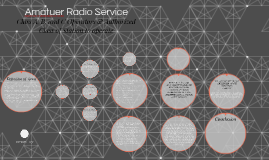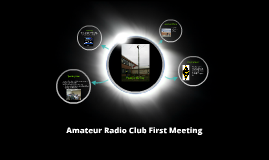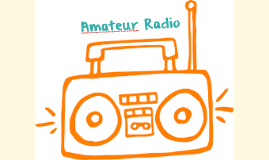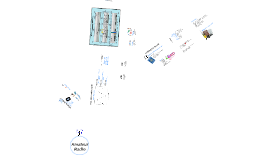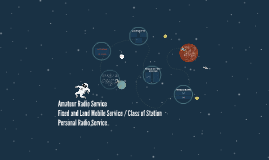Amateur Radio Service
Transcript: A Class ‘C’ licensee shall be authorized to operate an HF fixed radio station with an output power not to exceed 100 watts on CW or 200 watts PEP on SSB, and 100 watts on VHF fixed, mobile or portable station. Class C license holders are issued the call prefix DW, and are able to legally operate at SOME bands prescribed by the National Telecommunications Commission. The applicant is required to pass Elements 2, 3, 4 of the written exam. A Class ‘A’ licensee shall be authorized to operate an HF fixed, portable or mobile radio station with an output power not to exceed 1 kilowatt on CW or 2 kilowatts PEP on SSB, and “state of the art” on VHF/UHF fixed, mobile or portable station has the highest privileges of all amateur licenses in the Philippines. Class A license holders are issued the call prefixes 4F or DU, and are able to legally operate at ALL bands prescribed by the National Telecommunications Commission. The applicant is required to pass a five word per minute (5WPM) morse code test, and Elements 8, 9, 10 of the written exam. Class B (General Class) Definition of Terms Element I - International Morse Code, currently set at 5wpm receiving and sending (Class A only) Element II - Rules and Regulations Element III - Fundamentals of Electronics and Electricity Element IV - Amateur Radio Practice Element V - Signals, Frequencies and Emission Element VI - Circuit Components Element VII - Operating Procedures Element VIII - Practical Circuits Element IX - Antennas and Transmission Lines Element X - Radio Wave Propagation SECTION 24. The State recognizes the vital role of communication and information in nation-building. Conclusion A Class ‘B’ licensee shall be authorized to operate an HF fixed radio station with an output power not to exceed 500 watts on CW or 1 kilowatts PEP on SSB, and “state of the art” on VHF/UHF fixed, mobile or portable station. - has the second highest privileges of all amateur licenses in the Philippines. Class B license holders are issued the call prefix DV, and are able to legally operate at MOST bands prescribed by the National Telecommunications Commission. The applicant is required to pass Elements 5, 6, 7 of the written exam. An applicant for an amateur license must possess the following general qualifications: • Be a citizen of the Philippines or a citizen of another country which provides the same privilege extended to Filipino nationals as far as the examination is concerned. • Be at least 9 years old for Class D, and 12 years old for C, B and A. • Be of good moral character • Be able to transmit and receive messages either in Filipino or any of the Filipino dialects, English, Spanish or Arabic. Amatuer Radio Service Class C (Technician Class) An Amateur Radio License shall be issued to a person who has passed the appropriate NTC examination. Licenses are effective for up to 3 years. At the age of 60 years, a licensed amateur may avail of the Lifetime License. This is conditional on having had at least 15 years as a licensed Class A amateur prior to the application. Class A (Extra Class) Section 1. No person, firm, company, association or corporation shall construct, install, establish, or operate a radio station within the Philippine Islands without having first obtained a franchise therefor from the Philippine Legislature; Provided however, That no franchise from the Legislature shall be necessary for the construction, installation, establishment or operation of a broadcasting station, an amateur station, an experimental station, a training station, a station on board a mobile vessel, train, or aircraft, or a private station in a place without any means of communication Amateur radio (also called ham radio) describes the use of frequency spectrum for purposes of non-commercial exchange of messages, wireless experimentation, self-training, private recreation, radio sport, contesting, and emergency communication. Peak Envelope Power (PEP) is the highest envelope power supplied to the antenna transmission line by a transmitter Single Side Band (SSB) Single sideband modulation is a form of amplitude modulation. As the name implies, single sideband, SSB uses only one sideband for a given audio path to provide the final signal. Continuous Wave (CW) is a sinusoidal waveform with a constant amplitude and frequency Class A, B, and C Operators & Authorized Class of Station to operate The examinations cover the rules, procedures and technical materials that an operator will need in order to operate his station properly. The examination for amateur operators shall cover the following subjects: REPUBLIC ACT No. 3846 AN ACT PROVIDING FOR THE REGULATION OF RADIO STATIONS AND RADIO COMMUNICATIONS IN THE PHILIPPINE ISLANDS, AND FOR OTHER PURPOSES THE 1987 CONSTITUTION OF THE REPUBLIC OF THE PHILIPPINES ARTICLE II Company Logo






